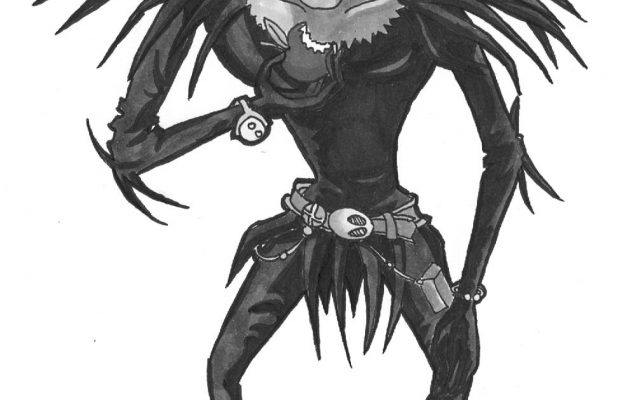The Death of its God: “Deathnote” Adaptation Disgraces the Original

Directed by Adam Wingard, “Death Note”, a live action adaptation of the original anime series, fails in maintaining the tone and spirit of the original anime. As a standalone film, “Death Note” is a somewhat entertaining story of both criminal and high school drama. As a live action adaptation of Death Note the anime, it is an absolute perversion and disgrace.
In the film, Light, a bright student from Seattle, comes across the Death Note, the killing tool of a god of death. Accompanied by Ryuk, a god of death, the Note allows Light to kill anyone by simply writing down their name. However, after developing the identity of Kira, a vigilante who enacts justice via the deathnote, Light gains the attention of L, a genius investigator. With his classmate Mia Light has to fight to both keep his identity concealed and carry out the duties of Kira.
Mia plays a pretty central role in this movie compared to the anime, which, for better or for worse, has made the movie one of romantic rather than criminal, drama. In the original series, Light and L’s relationship was much more complicated, with Light even going so far as to work on the Kira Investigation himself. This configuration allowed for a tense back and forth between L and Light, with L often being suspicious of Light and finding ways to prove his guilt. Light in turn spends the majority of the series trying to discover L’s name to write in the note. Kira’s transformation into a team feels like a cheap out, for Mia and Light’s romance is inspected in lieu of the original series’ strategic nuance. For example, one of the movies greatest conflicts comes when Mia goes behind Light’s back and starts killing investigators via the deathnote. This is new, for in the original series Light was always in control, with Mia playing a secondary role as Light’s servant.
This total change in plot is understandable, for the anime’s story is way to complicated for a short, hour and 40 minute film. To keep the feeling of the original show, Wingard includes several cute little interactions that Light and Mia have with the note, but these moves lack substance and feel like flashy tricks instead of clever maneuverings.
The movie also takes place in Seattle, a pretty big change from the original’s Japanese setting. Whitewashing is ever present, with the American cast a constant reminder of the prohibitive powers of being a minority in Hollywood. While the move to the U.S. makes sense with a white cast, the effect is still the same; white people being forcefully casted into roles where they don’t belong.
With an outlandish and totally new ending where Mia betrays Light and he self-destructs, Wingard greatly sacrifices on plot while failing to reap the rewards of such drastic changes. Sadly, this is found not only in the ending but all throughout the film, greatly detracting from the experience as a whole. A disgrace to the original animated masterpiece, “Deathnote” is fortunate to have big-budget flash to prop up its weak plot. While the film is still entertaining overall, I cannot help but feel cheated out of what could have been a great live action adaptation.


